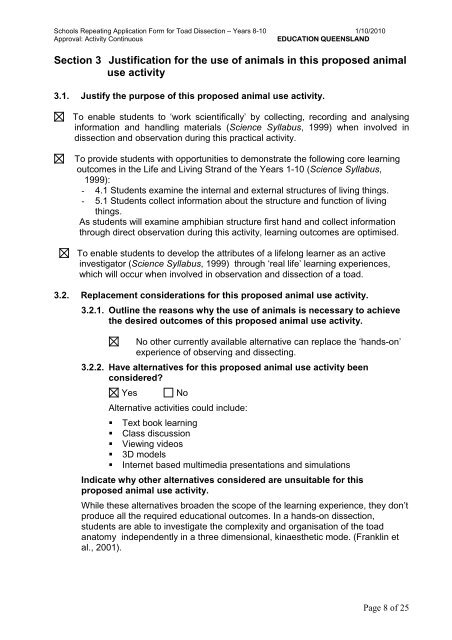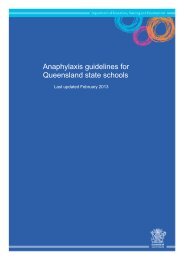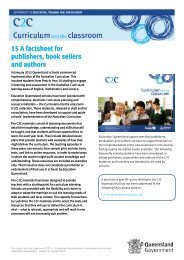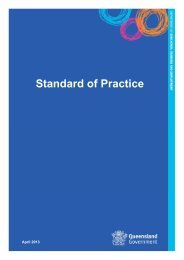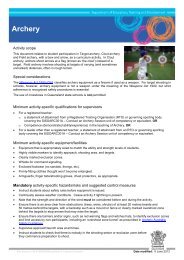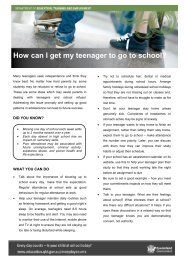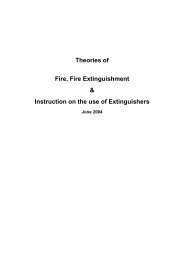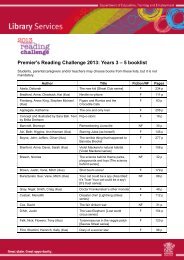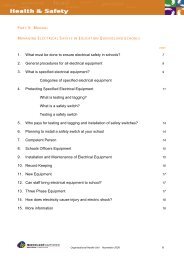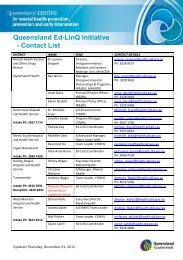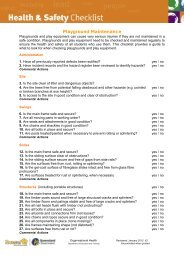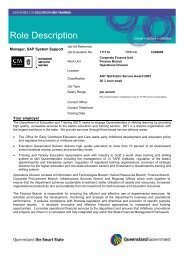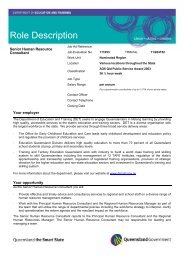Toad Dissection for Years 8 to 10 - Education Queensland
Toad Dissection for Years 8 to 10 - Education Queensland
Toad Dissection for Years 8 to 10 - Education Queensland
Create successful ePaper yourself
Turn your PDF publications into a flip-book with our unique Google optimized e-Paper software.
Schools Repeating Application Form <strong>for</strong> <strong>Toad</strong> <strong>Dissection</strong> – <strong>Years</strong> 8-<strong>10</strong> 1/<strong>10</strong>/20<strong>10</strong><br />
Approval: Activity Continuous EDUCATION QUEENSLAND<br />
Section 3 Justification <strong>for</strong> the use of animals in this proposed animal<br />
use activity<br />
3.1. Justify the purpose of this proposed animal use activity.<br />
To enable students <strong>to</strong> ‘work scientifically’ by collecting, recording and analysing<br />
in<strong>for</strong>mation and handling materials (Science Syllabus, 1999) when involved in<br />
dissection and observation during this practical activity.<br />
To provide students with opportunities <strong>to</strong> demonstrate the following core learning<br />
outcomes in the Life and Living Strand of the <strong>Years</strong> 1-<strong>10</strong> (Science Syllabus,<br />
1999):<br />
- 4.1 Students examine the internal and external structures of living things.<br />
- 5.1 Students collect in<strong>for</strong>mation about the structure and function of living<br />
things.<br />
As students will examine amphibian structure first hand and collect in<strong>for</strong>mation<br />
through direct observation during this activity, learning outcomes are optimised.<br />
To enable students <strong>to</strong> develop the attributes of a lifelong learner as an active<br />
investiga<strong>to</strong>r (Science Syllabus, 1999) through ‘real life’ learning experiences,<br />
which will occur when involved in observation and dissection of a <strong>to</strong>ad.<br />
3.2. Replacement considerations <strong>for</strong> this proposed animal use activity.<br />
3.2.1. Outline the reasons why the use of animals is necessary <strong>to</strong> achieve<br />
the desired outcomes of this proposed animal use activity.<br />
No other currently available alternative can replace the ‘hands-on’<br />
experience of observing and dissecting.<br />
3.2.2. Have alternatives <strong>for</strong> this proposed animal use activity been<br />
considered?<br />
Yes No<br />
Alternative activities could include:<br />
� Text book learning<br />
� Class discussion<br />
� Viewing videos<br />
� 3D models<br />
� Internet based multimedia presentations and simulations<br />
Indicate why other alternatives considered are unsuitable <strong>for</strong> this<br />
proposed animal use activity.<br />
While these alternatives broaden the scope of the learning experience, they don’t<br />
produce all the required educational outcomes. In a hands-on dissection,<br />
students are able <strong>to</strong> investigate the complexity and organisation of the <strong>to</strong>ad<br />
ana<strong>to</strong>my independently in a three dimensional, kinaesthetic mode. (Franklin et<br />
al., 2001).<br />
Page 8 of 25


